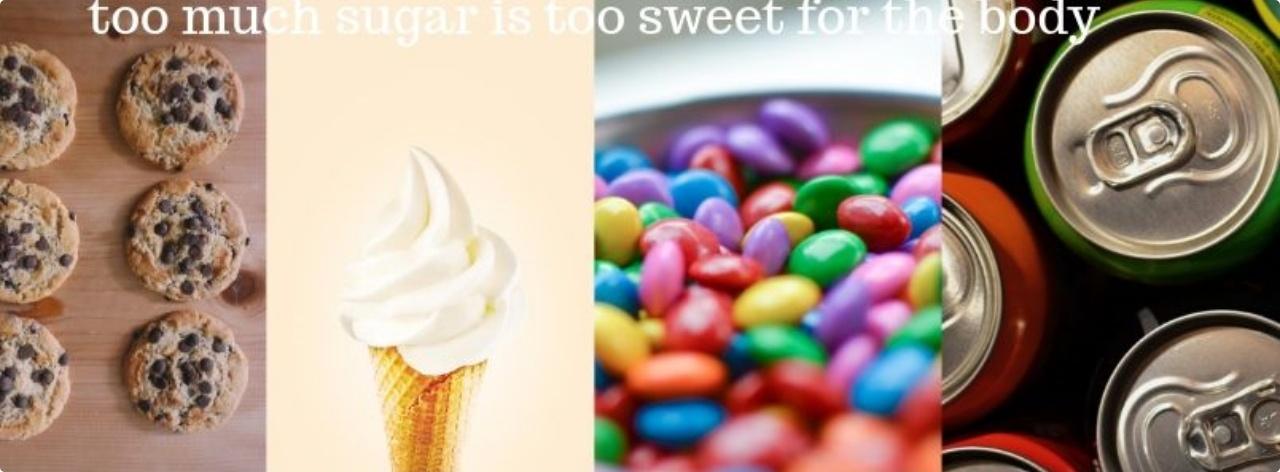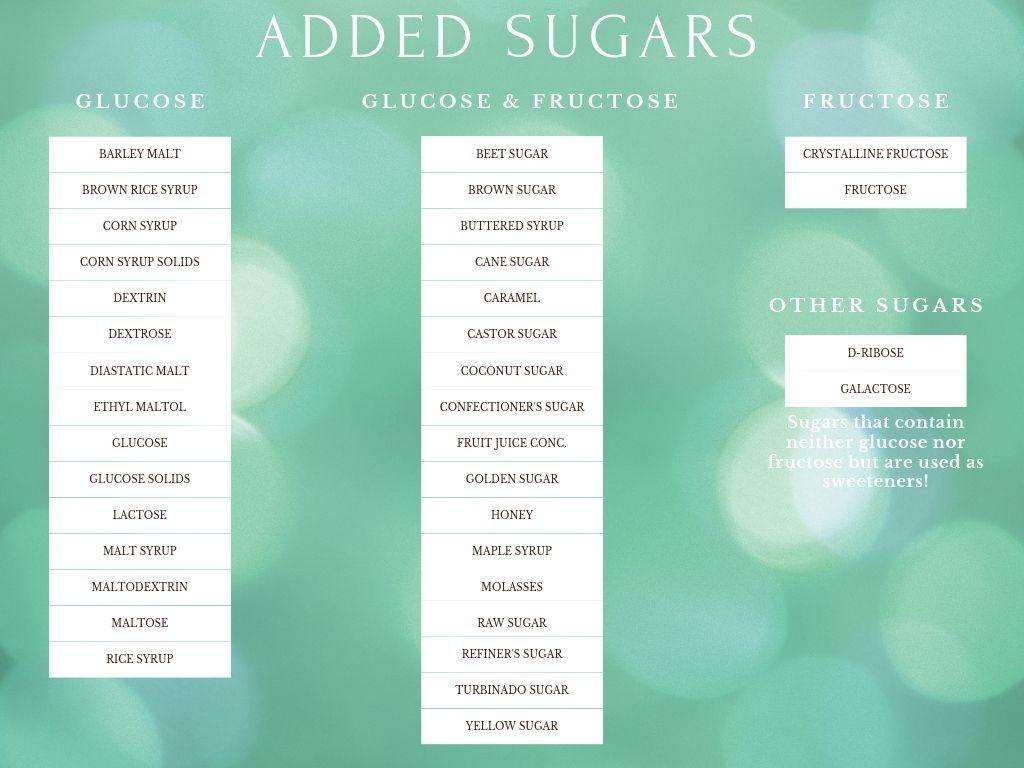Added sugars may be the single unhealthiest thing in the modern diet and can be hidden in many ways by food processing companies. Leading added sugar sources are sugar-sweetened beverages, grain-based desserts (cakes and cookies), candy, and dairy desserts like ice cream. These common treats store many different types of hidden sugars and can be harmful when overly consumed!
Sugar is added to food while its being processed to enhance flavor, texture, and shelf life to increase profits and sales. Added sugar is usually in the form of glucose, fructose, or sucrose. Daily added sugar limit for men is no more than 9 teaspoons while women cannot consume more than 6 teaspoons. Sadly, manufacturers often hide the total amount of sugar by listing it under several different names on the nutrition facts. It’s important to be aware of how much sugar you intake daily because our bodies don’t need sugar to function properly.
Different types of added sugars have different effects on the body. Almost every cell in the body can metabolize glucose because it is a sugar humans use to make energy, while fructose is metabolized almost completely in the liver. Studies have been conducted to prove that high fructose consumption can be linked to insulin resistance, metabolic syndrome, fatty liver, and type 2 diabetes.
The most common type of sugar is sucrose or table sugar. It is the sugar that is extracted from sugar cane or sugar beets and is 50% glucose and 50% fructose. It is found in many common household foods such as fruit juices, processed meat. Breakfast cereals, condiments, cookies, and more.
High-Fructose corn syrup is a sweetener that is found in many foods throughout the US. It is produced from cornstarch and consists of fructose and glucose. Two common types are HFCS55 and HFCS90. The numbers indicate how much fructose each form contains. HFCS55 contains 55% fructose and 45% glucose. HFCS90 contains 90% fructose.
Agave Nectar or agave syrup is another popular sweetener produced from the agave plant. It doesn’t spike blood sugar levels in comparison to other sweeteners so it is referred to as a ‘healthier’ alternative. Agave nectar contains about 70-90% fructose and 10-30% glucose meaning it is not a ‘healthier’ alternative since its high in fructose. It is used in many health foods such as yogurts and fruit bars.
This does not mean that ALL sugar is terrible or that you need to avoid eating anything with sugar in it. Natural sugars are found in fruits and vegetables and when properly portioned, they are not harmful to a healthy diet. They contain small amounts of sugar but also contain fiber, nutrients, and other beneficial components. The negative health effects spoken about high sugar consumption is due to the massive amount of added sugar that is present in the US modern diet. About 75% of all foods and beverages contain added sugar, hidden in the large array of forms provided.
The best way to avoid added sugars it to eat whole, clean, and unprocessed foods. If package food is a necessity in your lifestyle then be mindful of what sugars can be hiding inside it. Check the packaging for any of the listed sugars provided in this article. Also check that portions of sugar and be mindful to your daily intake!
This chart provides all different types of added sugars to be aware of when buying processed foods.





0 comments